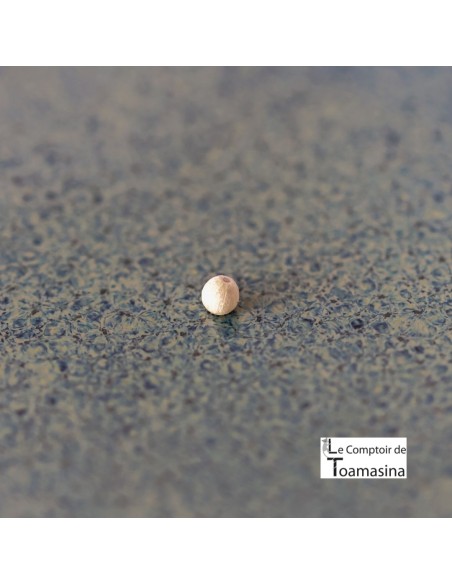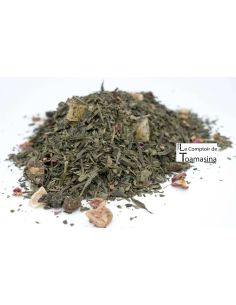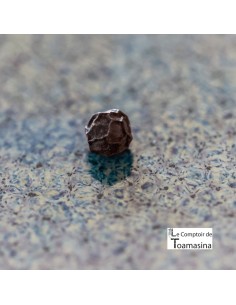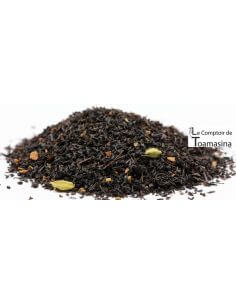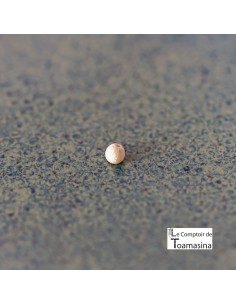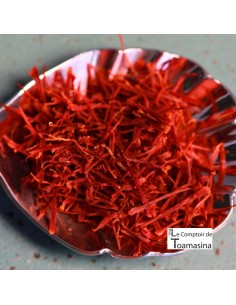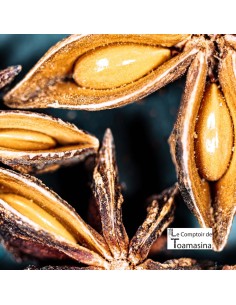Here we will explain to you how pepper is grown. In Brazil and Madagascar Arnaud will train in pepper cultivation.
First of all, we will talk about the climatic conditions, then the growing and drying methods for the different colors of peppercorns.
Optimal Cultivation Conditions
- Soil : Requires well-drained, deep, fertile soil rich in organic matter.
- Climate : Prefers a humid tropical climate, with temperatures between 23°C and 28°C.
- Space : Can be grown in tight spaces, but requires staking for optimal growth.
- Harvest : Starts from the second year, with maximum production after the third year.
- Cost : The cost of a plant varies between 0.4 euros to 0.6 euros, here we are talking about Brazil.
How to Start Your Pepper Plantation
Selection of Plants : Obtain healthy and vigorous plants from reputable nurseries. Popular varieties include apra, bragantina, cingapura, guajarina, iaçará, kottanadan and kuthiravally.
Climatic Conditions : The pepper tree flourishes in a tropical, hot and humid climate, with annual temperatures between 23°C and 28°C, high relative humidity (above 80%) and regular rainfall. It can also tolerate minimum temperatures of 15°C or be grown in a greenhouse. A bit like vanilla from Madagascar.
Use of Stakes : For reduced cost and better soil quality, live stakes such as gliricidia (Gliricidia sepium) must be used. Plant gliricidia cuttings 1 to 1.5 meters long at the start of the rainy season in holes 50 cm deep with a spacing of 2 x 2 meters. Prune and maintain the stakes regularly to ensure straight and vigorous growth.
Planting Process : Plant young pepper plants in January and February, in cloudy or rainy weather, in well-drained, fertile soil with a pH of 5.5 to 6. Plant the plants 15 cm from the stakes, in holes of 40x40x40cm. Cover them with palm leaves for 15 days to acclimatize them and tie them to the stakes with plastic strips or twine, adjusting the ties as they grow.
Ideal Spacing : Use spacings of 2 x 2 meters, 2.5 x 2.5 meters or 2 x 3 meters for wooden stakes. For gliricidia stakes, adopt a spacing of 2.5 x 2.5 meters in a single row or 2.2 x 2.2 x 4 meters in a double row.
Irrigation : Ensure regular irrigation to keep the soil moist, without saturation. Use suitable systems such as hoses, micro-sprinklers or a drip system, ensuring that each plant receives around 2 liters of water per day.
Pepper Production and Harvesting
Production begins approximately two years after planting and reaches its full potential from the third year, lasting up to 20 years with good maintenance. Two annual harvests are possible in suitable climates with irrigation. Manual fruit harvesting takes place from July to November.
Preparation of Different Types of Pepper
Green pepper :
- Harvest the ears when the fruits are two thirds of their development.
- Preparation methods:
- Salting with various concentrations of salt and citric/acetic acid, followed by pasteurization or maceration.
- Vacuum pack for marketing.
Black pepper :
- Harvest the fruits when they are fully developed.
- Dry the beaten fruit mechanically or manually, stirring regularly for even drying.
White pepper :
- Harvest the fruits when they are yellowish or red.
- Macerate the cobs in tanks of water, adding limestone to avoid bad odors.
- Dry in the sun after maceration.
Red pepper :
- Harvest the red to slightly purple fruits.
- Treat them the same as green pepper.
By following these practices, you can produce high-quality Selim pepper, suitable for a variety of culinary and commercial uses, ensuring successful and profitable cultivation.

